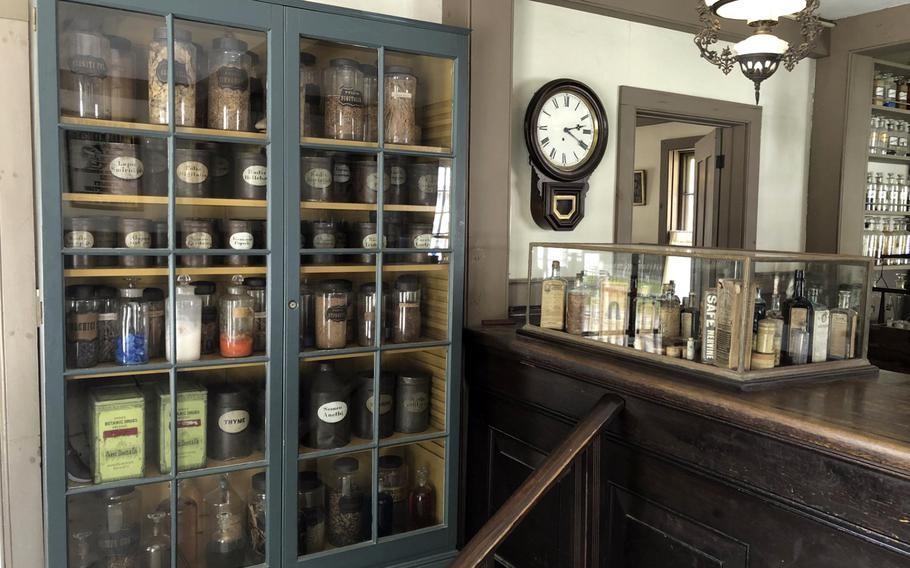
A mid-19th century drug store and doctor’s office re-created at The Mystic Seaport Museum, a 19-acre, historic seaport property in Mystic, Conn. (Juan King/Stars and Stripes)
A trip to Connecticut’s vibrant coastline is incomplete without a visit to the Mystic Seaport Museum, which will whisk you away to seaside life in the mid-19th century.
The museum’s founders — industrialist Edward Bradley, lawyer Carl Cutler and physician Dr. Charles Stillman — acquired the self-sufficient seaport property in 1929 to preserve its 200-plus-year history.
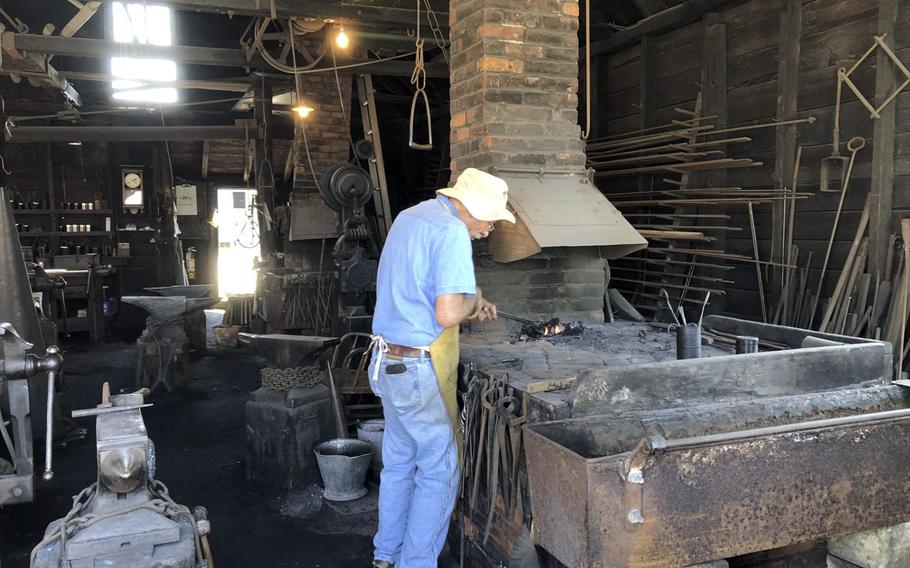
A trip to Connecticut’s vibrant coastline is incomplete without a visit to the Mystic Seaport Museum, which will whisk you to seaside life in the mid-19th century. (Juan King/Stars and Stripes)
My family ventured onto the 19-acre grounds during a whirlwind trip around the United States this summer. The smell of wood filled the air in the dusty, busy shipbuilding zone, the Henry B. Du Pont Preservation Shipyard, which is filled with the tools and materials common to maritime vessels of the era.
The shipyard features more than 500 historic vessels, including sloops, tugboats and a steamboat. A whaling ship, the Charles W. Morgan, built and launched in 1841, was moored to a pier nearby. Now the last of its kind, it was designated a National Historic Landmark in 1966.
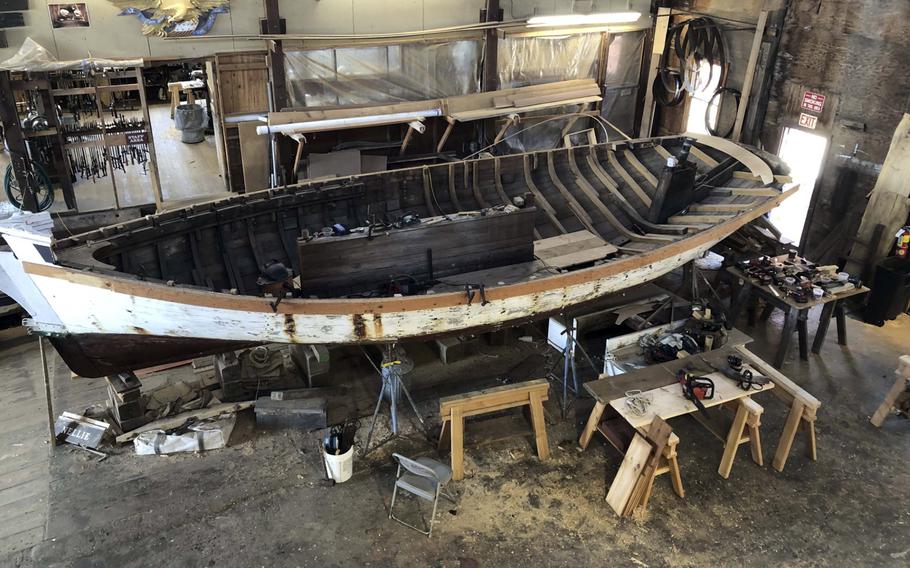
A boat repair shop in an active shipbuilding zone, the Henry B. Du Pont Preservation Shipyard, at The Mystic Seaport Museum, in Mystic, Conn. (Juan King/Stars and Stripes)
One large 19th-century fishing schooner, the L.A. Dunton, is being restored in the yard. We walked up an approximately two-story wooden staircase for a look inside the restoration process underway by professional shipwrights.
The Mystic Seaport Museum acquired the schooner in 1963, and it is one of a few remaining of its class. A nearby boathouse has rowboats, sailboats and pedal boats available to navigate yourself in the nearby Mystic River. It is open daily and is included in general admission.
A lobster shack down a gravel path was said to bring in up to 500 lobsters a day during its peak season.
A short walk from the yard are the old homes and working quarters of the re-created seaport village. Some large houses built during that era are the George Greenman House, erected for Greenman, one of the Greenman & Co. shipyard founders, and his wife, Abigail.
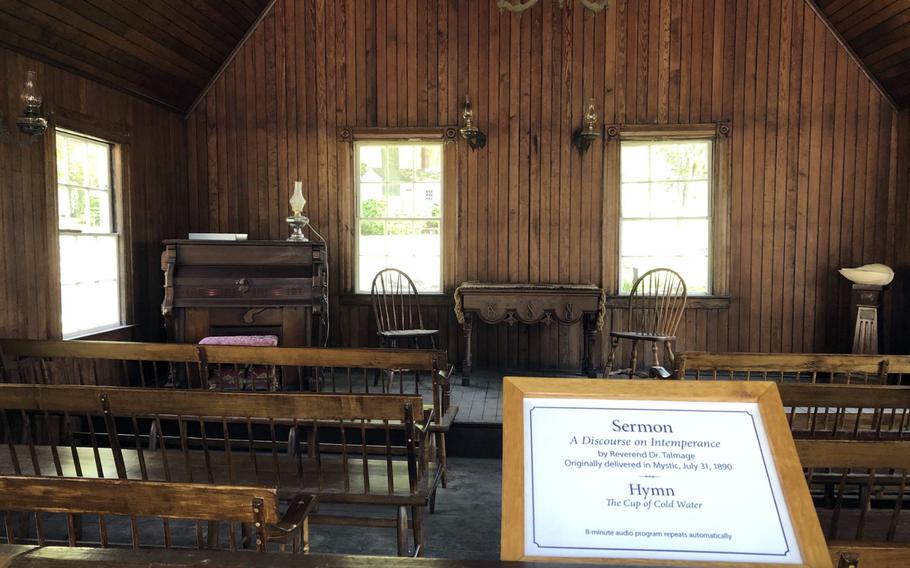
Inside a mid-19th century church at The Mystic Seaport Museum, in Mystic, Conn. (Juan King/Stars and Stripes)
There is a small church, a bank and school building among other establishments in the village. Looking inside brought a sense of the simple living of the time.
Trade shops consisted of ship carvers, ship smiths and a rigging loft. A drugstore, with myriad bottled medicines from that era used to heal or cure certain ailments, was connected to a small doctor’s office. The office had some of the primitive instruments that you could imagine were used on patients of that period.
Before leaving, we checked out the museum store outside the south entrance. Hundreds of nautical-themed items were for sale, from books, hats and clothing to snacks and children’s toys. My son selected a small navigational telescope as a parting souvenir.
There are staff historians, scientists, storytellers and others on the grounds to help guide and explain the area. The museum strives to offer a learning atmosphere for visitors with not only the exhibits but also its workshops, classes and more.
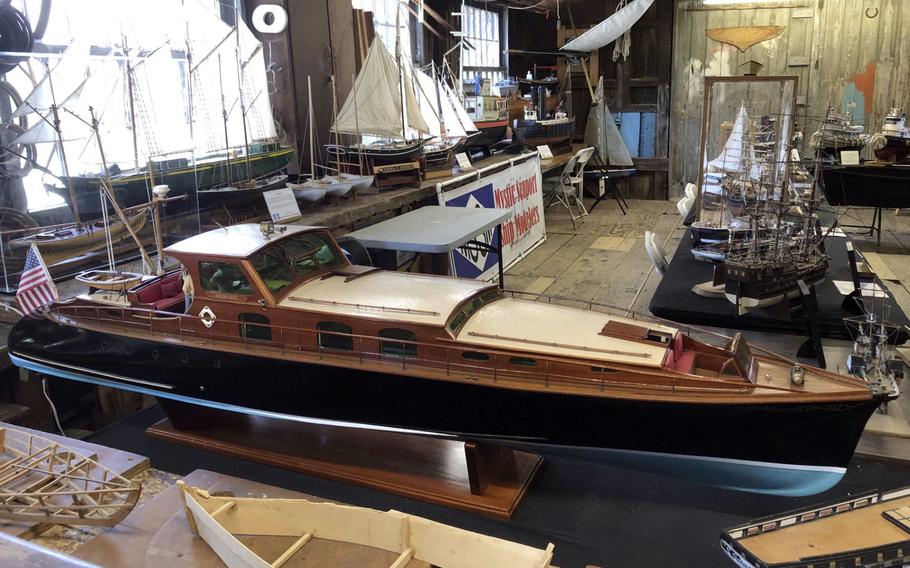
A trip to Connecticut’s vibrant coastline is incomplete without a visit to the Mystic Seaport Museum, which will whisk you to seaside life in the mid-19th century. (Juan King/Stars and Stripes)
If you go
Directions: 75 Greenmanville Ave., Mystic, Conn. 06355
Times: 10 a.m. to 5 p.m. daily. Grounds close at 6 p.m. during spring and summer; times and schedules change according to the season and certain exhibits or events may not be available.
Costs: $31 for adults; $27 for 13 to17; $21 for 4 to 12; $29 for 65 and older; free for 3 and younger.
Food: The Anchor Café near the museum entrance offers breakfast, lunch and other snacks and drinks.
Information: Phone: 860-572-0711; Online: mysticseaport.org